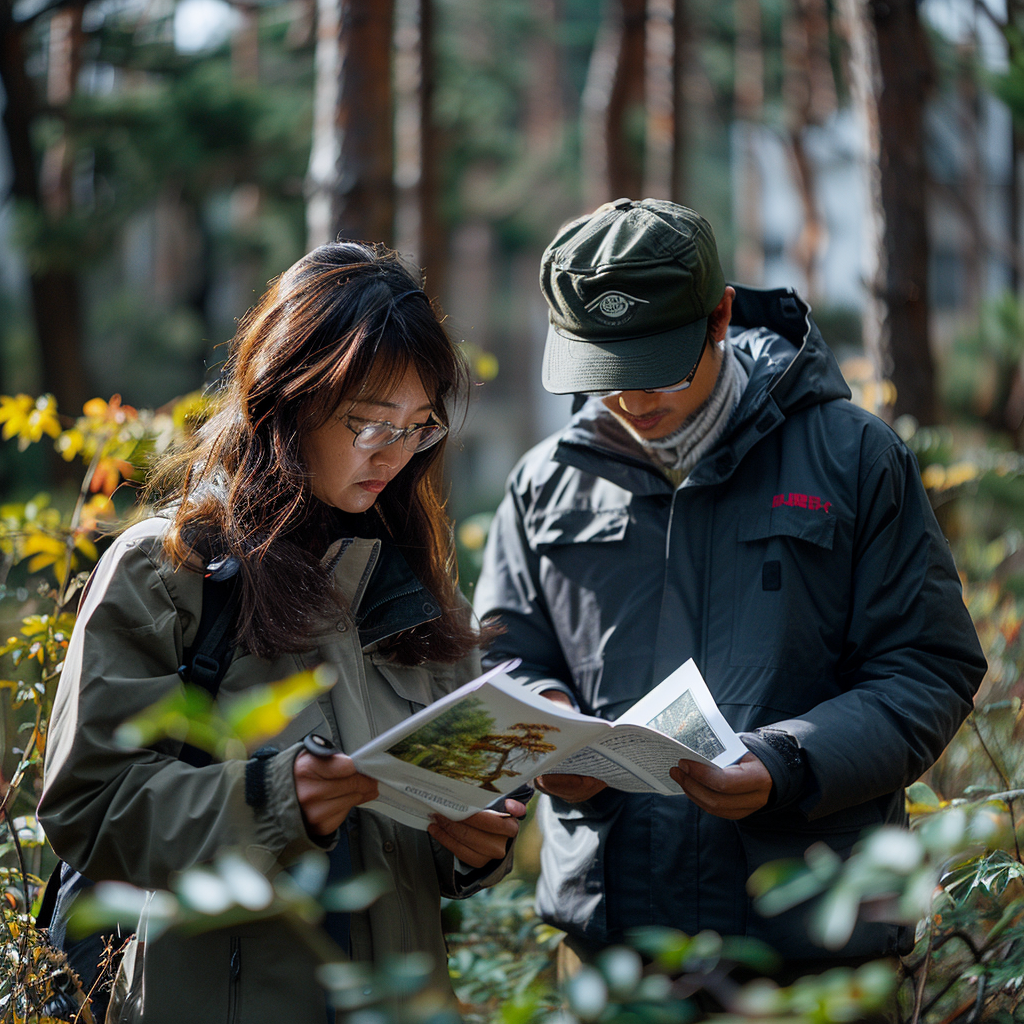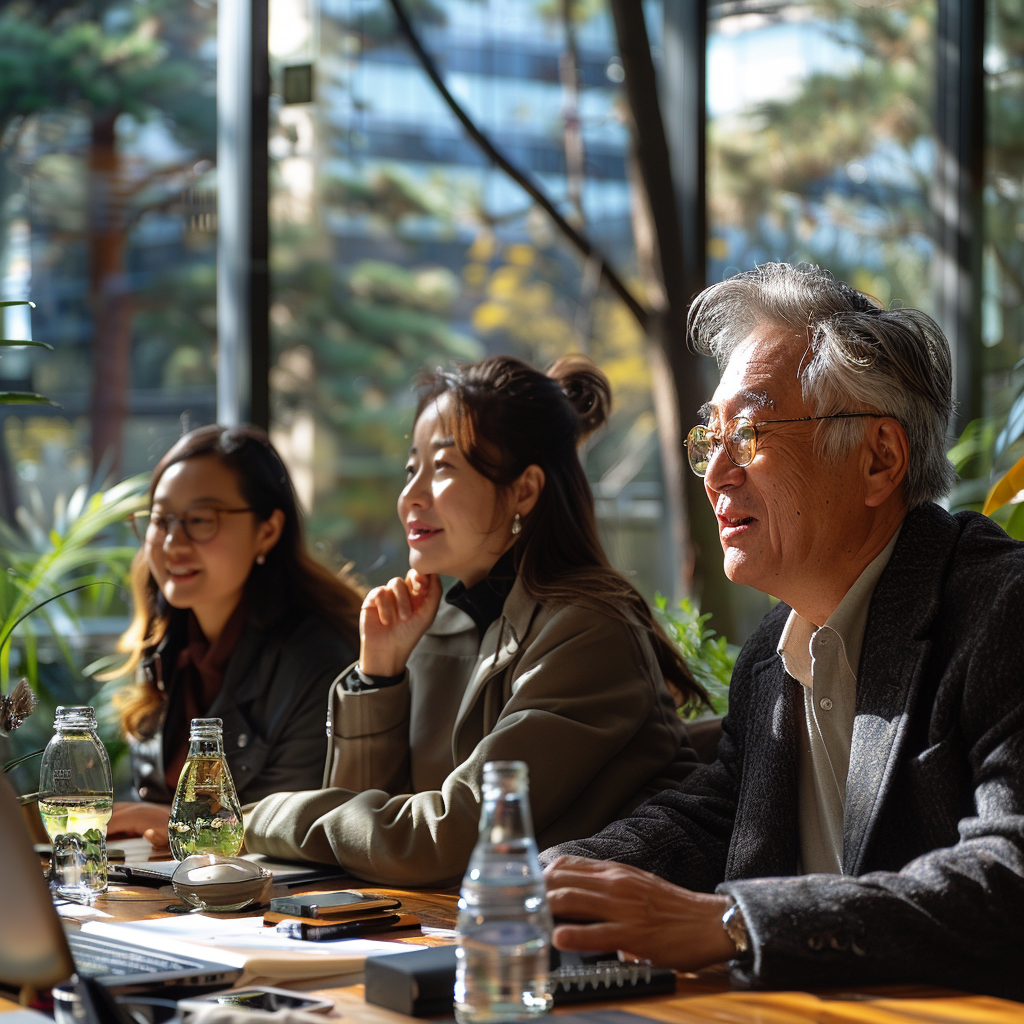發(fā)布:2025-04-18 瀏覽:0
自然保護(hù)區(qū)作為地球生態(tài)系統(tǒng)的重要屏障,承載著保護(hù)生物多樣性、維護(hù)生態(tài)平衡的關(guān)鍵使命。科學(xué)合理的自然保護(hù)區(qū)規(guī)劃,是確保其功能有效發(fā)揮、實現(xiàn)長期可持續(xù)發(fā)展的核心。在規(guī)劃過程中,需要從多個維度審慎考量,將生態(tài)保護(hù)需求與社會發(fā)展需求有機(jī)結(jié)合,構(gòu)建起人與自然和諧共生的發(fā)展格局。?
As an important barrier of the Earth's ecosystem, nature reserves carry the key mission of protecting biodiversity and maintaining ecological balance. Scientific and rational planning of nature reserves is the core to ensure their effective functioning and achieve long-term sustainable development. In the planning process, it is necessary to carefully consider from multiple dimensions, organically combine ecological protection needs with social development needs, and build a development pattern of harmonious coexistence between humans and nature. ?
科學(xué)全面的前期調(diào)研?
Scientific and comprehensive preliminary research
生態(tài)本底調(diào)查?
Ecological background investigation
深入了解自然保護(hù)區(qū)的生態(tài)本底是規(guī)劃的基礎(chǔ)。對區(qū)域內(nèi)的地形地貌進(jìn)行詳細(xì)測繪,繪制高精度地形圖,掌握山脈走向、河流分布、海拔高度等信息,這些地形因素會直接影響生物的棲息與遷徙。例如,在山區(qū)自然保護(hù)區(qū),山谷和山脊的分布決定了動植物的垂直分布差異。同時,全面調(diào)查區(qū)域內(nèi)的植被類型,辨別不同植物群落的分布范圍、物種組成和演替階段。通過樣方法、樣線法等科學(xué)手段,統(tǒng)計植物的種類、數(shù)量和覆蓋度。以熱帶雨林自然保護(hù)區(qū)為例,需要精確區(qū)分原始雨林、次生林和人工林的分布區(qū)域,因為不同的植被類型對生態(tài)系統(tǒng)的功能和穩(wěn)定性有著不同的貢獻(xiàn)。?
A deep understanding of the ecological background of nature reserves is the foundation of planning. Detailed surveying and mapping of the terrain and landforms within the region, creating high-precision topographic maps, and obtaining information on mountain ranges, river distribution, altitude, and other factors that directly affect the habitat and migration of organisms. For example, in mountainous nature reserves, the distribution of valleys and ridges determines the vertical distribution differences of flora and fauna. At the same time, conduct a comprehensive investigation of the vegetation types in the area, identify the distribution range, species composition, and succession stages of different plant communities. Statistical analysis of plant species, quantity, and coverage using scientific methods such as sampling and line sampling. Taking tropical rainforest nature reserves as an example, it is necessary to accurately distinguish the distribution areas of primary rainforests, secondary forests, and artificial forests, as different vegetation types contribute differently to the functionality and stability of ecosystems. ?
對于動物資源的調(diào)查同樣至關(guān)重要。采用紅外相機(jī)監(jiān)測、鳴聲識別、糞便分析等技術(shù),摸清保護(hù)區(qū)內(nèi)野生動物的種類、數(shù)量、分布范圍和活動規(guī)律。比如,在東北虎自然保護(hù)區(qū),通過長期的紅外相機(jī)監(jiān)測,掌握東北虎的活動軌跡和繁殖習(xí)性,為后續(xù)的保護(hù)規(guī)劃提供數(shù)據(jù)支持。此外,還需對保護(hù)區(qū)內(nèi)的土壤類型、水文條件、氣候特征等進(jìn)行詳細(xì)研究,了解土壤的肥力、酸堿度,河流的流量、水質(zhì)變化,以及氣溫、降水等氣候要素,這些因素相互關(guān)聯(lián),共同構(gòu)成了保護(hù)區(qū)的生態(tài)環(huán)境。?
The investigation of animal resources is equally crucial. Using technologies such as infrared camera monitoring, sound recognition, and fecal analysis, we aim to identify the species, quantity, distribution range, and activity patterns of wild animals within the protected area. For example, in the Northeast Tiger Nature Reserve, long-term infrared camera monitoring is used to grasp the activity trajectory and breeding habits of the Northeast Tiger, providing data support for subsequent conservation planning. In addition, detailed research is needed on soil types, hydrological conditions, climate characteristics, etc. within the protected area to understand soil fertility, acidity and alkalinity, changes in river flow and water quality, as well as climate factors such as temperature and precipitation. These factors are interrelated and together constitute the ecological environment of the protected area. ?
社會經(jīng)濟(jì)狀況調(diào)研?
Research on Social and Economic Conditions
除了生態(tài)因素,自然保護(hù)區(qū)周邊的社會經(jīng)濟(jì)狀況也會對規(guī)劃產(chǎn)生重要影響。調(diào)查當(dāng)?shù)氐娜丝跀?shù)量、分布、職業(yè)結(jié)構(gòu)和收入水平,了解居民對自然資源的依賴程度。例如,在一些以林業(yè)、漁業(yè)為生的地區(qū),居民的生產(chǎn)生活與自然保護(hù)區(qū)內(nèi)的資源密切相關(guān)。同時,梳理周邊的產(chǎn)業(yè)結(jié)構(gòu),包括農(nóng)業(yè)、工業(yè)、旅游業(yè)等的發(fā)展規(guī)模和模式。若保護(hù)區(qū)周邊存在工業(yè)企業(yè),需要評估其對保護(hù)區(qū)生態(tài)環(huán)境的潛在污染風(fēng)險;若旅游業(yè)較為發(fā)達(dá),則要考慮旅游活動對保護(hù)區(qū)生態(tài)的影響。此外,還需了解當(dāng)?shù)氐奈幕瘋鹘y(tǒng)、風(fēng)俗習(xí)慣,因為這些文化因素可能與自然保護(hù)存在潛在的聯(lián)系,例如一些少數(shù)民族的傳統(tǒng)習(xí)俗中蘊含著對自然資源的保護(hù)智慧,可在規(guī)劃中加以借鑒和融合。?
In addition to ecological factors, the socio-economic conditions surrounding nature reserves can also have a significant impact on planning. Investigate the local population size, distribution, occupational structure, and income level to understand the residents' dependence on natural resources. For example, in some areas where forestry and fishing make a living, residents' production and life are closely related to the resources within nature reserves. At the same time, sort out the surrounding industrial structure, including the development scale and mode of agriculture, industry, tourism, etc. If there are industrial enterprises around the protected area, it is necessary to assess their potential pollution risks to the ecological environment of the protected area; If the tourism industry is relatively developed, the impact of tourism activities on the ecology of the protected area should be considered. In addition, it is necessary to understand the local cultural traditions and customs, as these cultural factors may have potential connections with nature conservation. For example, the traditional customs of some ethnic minorities contain wisdom in protecting natural resources, which can be borrowed and integrated into planning. ?
合理的功能分區(qū)規(guī)劃?
Reasonable functional zoning planning
核心區(qū)規(guī)劃?
Core area planning
核心區(qū)是自然保護(hù)區(qū)內(nèi)生態(tài)價值最高、最脆弱的區(qū)域,應(yīng)實行嚴(yán)格的保護(hù)措施。在核心區(qū)內(nèi),禁止一切人類干擾活動,包括開發(fā)建設(shè)、旅游觀光、狩獵等。劃定明確的邊界,并設(shè)置醒目的標(biāo)識牌,防止人員誤入。例如,在大熊貓自然保護(hù)區(qū)的核心區(qū),嚴(yán)禁任何形式的人類活動,以確保大熊貓及其棲息地的完整性和穩(wěn)定性。同時,加強(qiáng)對核心區(qū)的生態(tài)監(jiān)測,建立長期的生態(tài)監(jiān)測站點,利用衛(wèi)星遙感、無人機(jī)監(jiān)測等技術(shù),實時掌握核心區(qū)的生態(tài)變化情況,及時發(fā)現(xiàn)并處理潛在的生態(tài)問題。?
The core area is the most ecologically valuable and vulnerable area within the nature reserve, and strict protection measures should be implemented. Within the core area, all human interference activities are prohibited, including development and construction, tourism, hunting, etc. Define clear boundaries and set up prominent signs to prevent personnel from entering by mistake. For example, in the core area of the Giant Panda Nature Reserve, any form of human activity is strictly prohibited to ensure the integrity and stability of giant pandas and their habitats. At the same time, strengthen ecological monitoring of the core area, establish long-term ecological monitoring stations, use satellite remote sensing, unmanned aerial vehicle monitoring and other technologies to real-time grasp the ecological changes in the core area, and timely discover and deal with potential ecological problems. ?

緩沖區(qū)規(guī)劃?
Buffer zone planning
緩沖區(qū)位于核心區(qū)外圍,起到緩沖和過渡的作用。在緩沖區(qū)內(nèi),可允許開展一些非破壞性的科學(xué)研究和監(jiān)測活動,如生態(tài)定位研究、物種動態(tài)監(jiān)測等。同時,嚴(yán)格限制旅游活動,只允許開展少量的生態(tài)教育和科普活動,且需遵循嚴(yán)格的管理規(guī)定,控制游客數(shù)量和活動范圍。例如,在長白山自然保護(hù)區(qū)的緩沖區(qū),設(shè)置了生態(tài)科普步道,游客在專業(yè)導(dǎo)游的帶領(lǐng)下,沿著固定路線參觀,了解保護(hù)區(qū)的生態(tài)知識,既滿足了公眾的生態(tài)教育需求,又避免了對生態(tài)環(huán)境的破壞。此外,緩沖區(qū)還可作為核心區(qū)與實驗區(qū)之間的生態(tài)屏障,減少人類活動對核心區(qū)的干擾。?
The buffer zone is located on the periphery of the core area and serves as a buffer and transition. Non destructive scientific research and monitoring activities, such as ecological positioning studies and species dynamics monitoring, may be allowed to be carried out within the buffer zone. At the same time, tourism activities are strictly restricted, with only a small number of ecological education and science popularization activities allowed, and strict management regulations must be followed to control the number of tourists and the scope of activities. For example, in the buffer zone of Changbai Mountain Nature Reserve, an ecological science popularization trail has been set up. Tourists can visit along a fixed route under the guidance of professional guides to learn about the ecological knowledge of the reserve. This not only meets the public's ecological education needs, but also avoids damage to the ecological environment. In addition, the buffer zone can also serve as an ecological barrier between the core area and the experimental area, reducing the interference of human activities on the core area. ?
實驗區(qū)規(guī)劃?
Experimental area planning
實驗區(qū)是自然保護(hù)區(qū)內(nèi)開展適度開發(fā)和利用活動的區(qū)域。在實驗區(qū)內(nèi),可合理發(fā)展生態(tài)旅游、生態(tài)農(nóng)業(yè)、林下經(jīng)濟(jì)等產(chǎn)業(yè),實現(xiàn)生態(tài)保護(hù)與經(jīng)濟(jì)發(fā)展的有機(jī)結(jié)合。例如,在浙江的一些自然保護(hù)區(qū)實驗區(qū),發(fā)展生態(tài)茶園和竹林經(jīng)濟(jì),既增加了當(dāng)?shù)鼐用竦氖杖耄执龠M(jìn)了生態(tài)保護(hù)。同時,實驗區(qū)也是開展生態(tài)修復(fù)和生態(tài)建設(shè)的重要區(qū)域,可通過植樹造林、退耕還林、濕地恢復(fù)等措施,改善保護(hù)區(qū)的生態(tài)環(huán)境。此外,實驗區(qū)還可作為科研成果轉(zhuǎn)化和推廣的基地,將在保護(hù)區(qū)內(nèi)開展的科研項目成果應(yīng)用于實際生產(chǎn)中,實現(xiàn)生態(tài)效益和經(jīng)濟(jì)效益的雙贏。
The experimental area is an area within the nature reserve where moderate development and utilization activities are carried out. In the experimental area, industries such as ecotourism, ecological agriculture, and agroforestry can be reasonably developed to achieve an organic combination of ecological protection and economic development. For example, in some experimental areas of nature reserves in Zhejiang, the development of ecological tea gardens and bamboo forest economy has not only increased the income of local residents but also promoted ecological protection. At the same time, the experimental area is also an important area for ecological restoration and construction, which can improve the ecological environment of the protected area through measures such as afforestation, returning farmland to forests, and wetland restoration. In addition, the experimental area can also serve as a base for the transformation and promotion of scientific research achievements, applying the results of scientific research projects carried out in the protected area to practical production, achieving a win-win situation of ecological and economic benefits.
本文由林業(yè)資產(chǎn)價格評估友情奉獻(xiàn).更多有關(guān)的知識請點擊:http://www.readstietime.com我們將會對您提出的疑問進(jìn)行詳細(xì)的解答,歡迎您登錄網(wǎng)站留言.
This article is dedicated to friendship For more information, please click: We will provide detailed answers to your questions. You are welcome to log in to our website and leave a message


















